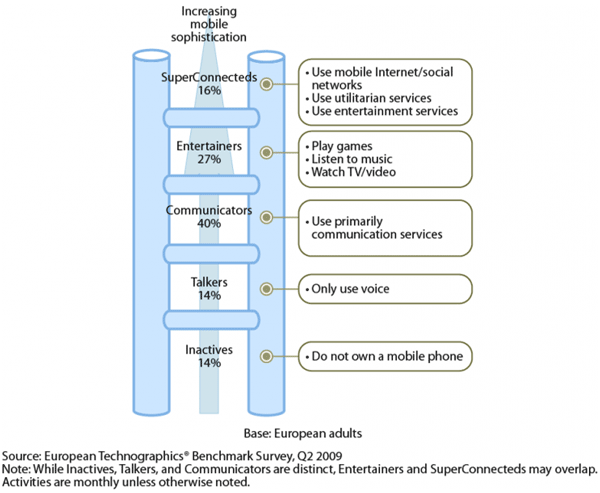The Data Digest: Which Consumers Use Mobile Apps?
Despite the early success of the Apple App Store, the market for mobile applications is still in its infancy. Many players haven't really launched or marketed their offerings yet, but the market is already crowded, with around 80 would-be application stores available worldwide as of June 2010. On the other side there's the consumer interest. Last week Nielsen published its State of the Mobile Apps 2010 report that showed that as of June 2010, 59% of smartphone owners report having downloaded a mobile app in the last 30 days. But a recent study of the Pew Internet and American Life Project shows that “Having apps and using apps are not synonymous.”
However, companies that want to develop a mobile strategy should begin with a data-based understanding of how mobile-advanced their brand's consumers are and will be. Mobile Technographics® places consumers into groups based on their mobile phone usage. The groups are defined by the extent to which the mobile phone user has adopted mobile data services, the frequency of use of these services, and the level of sophistication in the mobile applications he or she uses.
Mobile presents an opportunity for brands to interact with their customers, irrespective of place and time of day, on the most personal device that the customer owns. Understanding how a customer uses his or her mobile phone today is the first step, and one that you must revisit periodically. The Mobile Technographics Profile of a customer and a target audience will evolve over time as consumers' mobile sophistication grows.
In the mean time, remember that you can only reach a minority of consumers via apps. Today, the Apple App Store provides the best application experience. However, about 2% of European and 4% of US consumers report owning an iPhone. Other devices and stores are starting to catch up, but they are still far behind Apple. In short, reach is limited for now.
